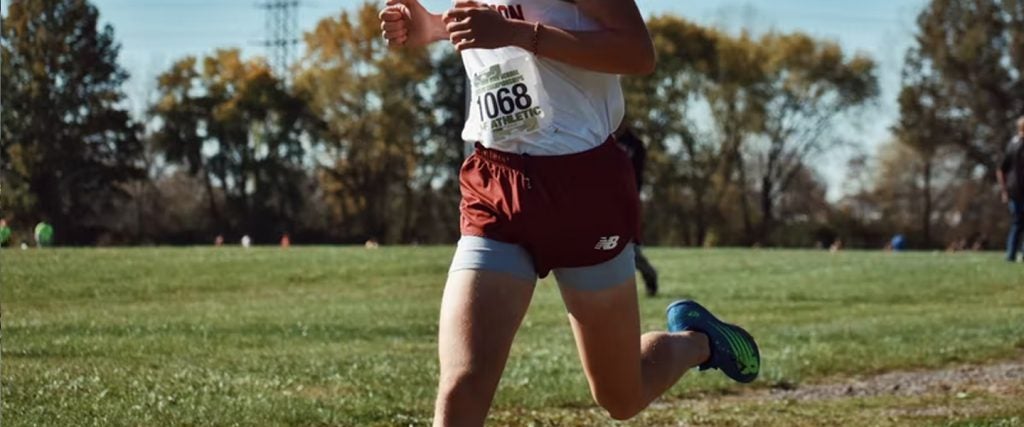Once upon a time, I used to shuttle Michigan Speaker of the House Andy Dillon back and forth from the State Capitol Building in Lansing to his house on a near daily basis. As the member of his staff who lived physically closest to him at the time, it was an easy way for me to add some additional value to my role as an aide of his, especially since many of my tasks were essentially redundancies on our very talented roster.
When his nose wasn’t firmly planted in the pages of the Detroit Free Press, I was able to pick his brain about all sorts of topics — including the period of time when he was a star on both the Notre Dame cross-country and track-and-field teams. “What were your workouts like when you were training at Notre Dame?” I inquired during one of those car rides.
“For cross country?” he replied without shifting his eyes away from the newspaper. “Lots of different stuff — like Fartleks.”
I wasn’t sure I’d heard that correctly, so I took my eyes off the road to look directly at him. “Fart… licks?” I attempted to repeat.
Dillon smirked and laughed. “Fartleks,” he corrected. “It’s when you run for a long time without stopping, but you vary your speed a lot as you go.”
I was relieved that we weren’t talking about flatulence, but I still wanted to learn more about this supposedly optimal method for perfecting long-distance running performances.
Me, too. So what exactly is Fartlek training?
Fartlek training styles were developed in the 1930s by former Swedish Olympian Gösta Holmér in order to improve the performance level of the Swedish cross-country team. His goal was to enhance the overall conditioning of the team’s members by encouraging them to simultaneously train speed and endurance, but without long stretches during which athletes would be forced to run at an all-out pace. That’s when he developed the “Fartlek” — translated to English from Swedish as “speed play.”
The very first Fartlek training session ever implemented looked like this:
- A warm-up of easy running for 5 to 10 minutes.
- Steady, hard speed for 1.5 to 2.5 kilometers (0.9 to 1.6 miles); like a long repetition.
- A recovery of rapid walking for about 5 minutes.
- Start of speed work — easy running interspersed with sprints of about 50 to 60 meters (160 to 200 feet), repeated until a little tired.
- Easy running with three or four “quick steps” now and then (simulating suddenly speeding up to avoid being overtaken by another runner).
- Full speed uphill for 175 to 200 meters (570 to 660 feet).
- Fast pace for 1 minute. (The whole routine is then repeated until the total time prescribed on the training schedule has elapsed.)
Fartlek training began to receive attention in the U.S. in the 1950s, and its influence only expanded as the running boom of the 1970s got underway, with the number of everyday joggers multiplying exponentially, all of whom wanted to explore training styles that would make them more competitive in their local 5Ks.
So is Fartlek training anything like HIIT training?
Absolutely not.
The definition of high intensity interval training has become bastardized due to the diverse range of workout styles people have attempted to shoehorn into that category. However, this is one of those instances where it’s easier to draw distinct lines between categories.
All of the original forms of HIIT protocols that formed the basis for that particular variety of training — including the Coe regimen, the Tabata regimen and the Gibala regimen — mandated that intense bursts of activity be followed by periods of total rest, often following a 2-to-1 ratio (e.g., 30 seconds of exertion followed by 15 seconds of inactivity).
By its very essence, Fartlek training defies the spirit of HIIT training by necessitating that the body stay in constant motion. Whereas forms of HIIT training — like the Tabata regimen in particular — were devised to enable athletes to rapidly acquire or maintain levels of conditioning similar to athletes who trained for longer durations of steady-state cardio while also experiencing the discomforts that came with all-out bursts of speed, Fartlek training is intended to mix both speed and endurance into a non-stop training format that has active recovery built right into the lengthy grinds.
Finally, while Fartlek protocols can incorporate segments of all-out sprinting without tainting the spirit of what they’re intended to accomplish, 100 percent of the activity in a HIIT training experience is intended to be performed in an all-out capacity.
Should I be adding Fartleks to my training?
Do you intend to race, or do you feel the need to condition your body to shift optimally between different speeds over the course of a single exertion of running, swimming, skiing or some other cardiovascular activity? Fartlek training was devised with that very specific intention in mind: pinnacle-level efficiency in competition, or at a specified moment of activity.
To that end, if your goal is the mere obliteration of calories, Fartleks will be superior to HIIT inasmuch as they maintain your constant movement over a longer duration. But they’re superfluous in the grand scheme of things if you don’t need the ability to strategically downshift and leave the competition sniffing your fartleks.

